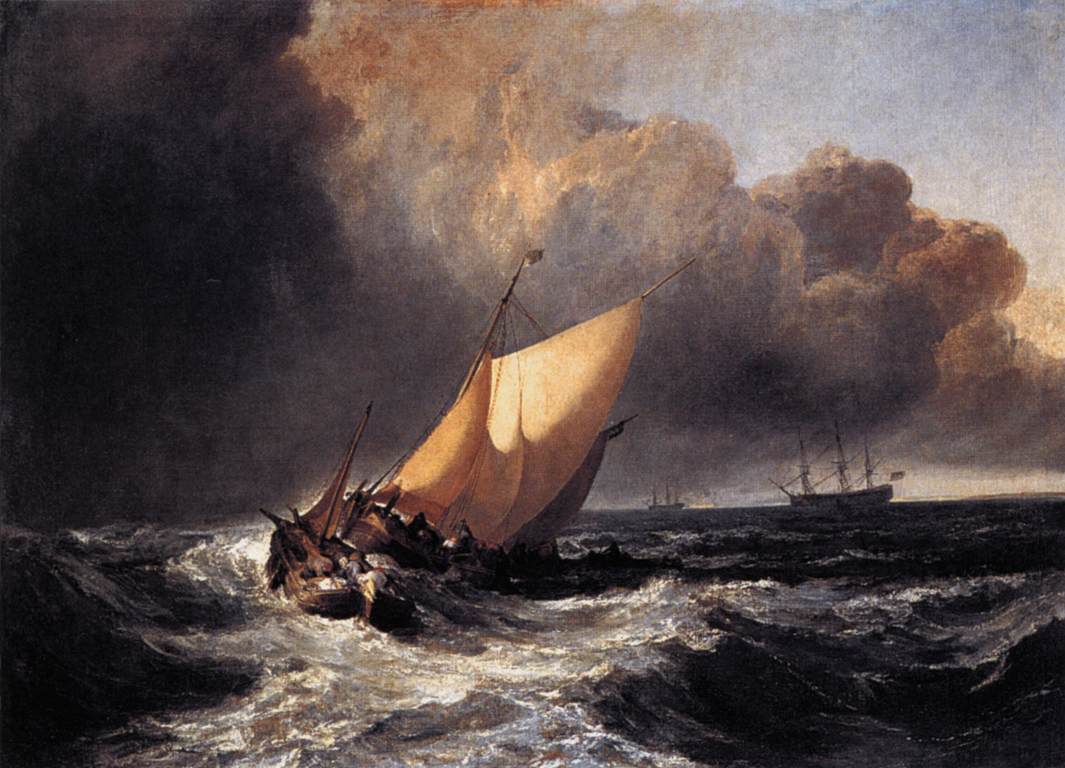Description
"Dutch Boats in a Gale" is a masterpiece by renowned English artist Joseph Mallord William Turner. Painted in 1801, this painting captures a dramatic and exciting scene of Dutch ships battling a storm on the high seas.
Turner's artistic style is highlighted in this work, as it shows his mastery of technique and his ability to capture atmosphere and movement. He uses loose, gestural brushstrokes to depict choppy water and stormy skies, creating a sense of dynamism and energy. Turner also uses a vibrant and contrasting color palette, with dark tones and rich shadows contrasting with glimmers of light filtering through the clouds.
The composition of the painting is impressive, as Turner deftly manages to balance the elements on the canvas. At the center of the work is a Dutch ship fighting against the tidal waves, while other ships are seen around it, some in danger of being engulfed by the waves. The position of the boats and the waves creates a sense of movement and tension, making the viewer feel immersed in the scene.
The story behind this painting is fascinating. Turner is believed to have been inspired by an actual storm he witnessed while traveling across the English Channel. The painting was first exhibited at the Royal Academy in London in 1802, where it received mixed reviews. Some critics praised Turner's technical skill, while others criticized his bold and unconventional approach.
A little known aspect of this painting is that Turner added a touch of romanticism to the scene. Instead of depicting Dutch ships realistically, he painted them in an idealized manner, giving them a more dramatic and heroic appearance. This shows the influence of the romantic movement on Turner's work and his desire to evoke intense emotions in the viewer.
In short, "Dutch Boats in a Gale" is a masterpiece that stands out for its artistic style, impressive composition, and masterful use of color. The story behind the painting and little-known aspects add an extra level of fascination to this iconic Turner artwork.

